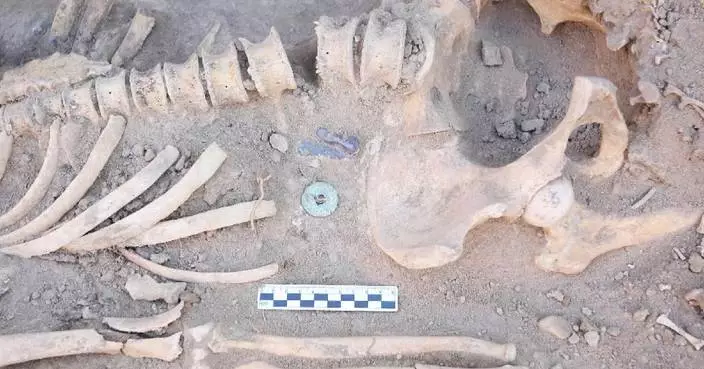Commemorations were held across China on Wednesday, the 93rd anniversary of the September 18 Incident which marked the beginning of the 14-year Chinese People's War of Resistance against Japanese Aggression, to mourn fallen heroes and war victims while calling on people to remember their ancestors' sacrifices.
On September 18, 1931, Japanese troops blew up a section of the railway in Shenyang and accused the Chinese military of doing it. Using the blast as a pretext, Japanese forces bombarded Shenyang on the same night, launching a full-scale invasion of northeast China.
A bell-ringing ceremony was held to mark the anniversary in front of a monument at the September 18 Incident History Museum in Shenyang City, in northeast China's Liaoning Province, on Wednesday morning.
Representatives of people from all walks of life struck a bell 14 times, symbolizing the 14 years of fighting against Japanese aggressors by the Chinese people. The bell was cast with the words "Never forget national humiliation".
"We must inherit and carry forward the Spirit of the Resistance Against Japanese Aggression, never forget history, and cherish peace," said Tong Bo, an attendee at the commemoration.
Air-raid alarms were sounded in many cities across China on Wednesday morning to mourn fallen heroes and war victims.
"Ninety-three years have passed, and we must never forget what happened on September 18, 1931. Today, China has undergone earth-shaking changes. We must not forget the national humiliation and strive for a better future," said Du Dongdong, a resident in Yan'an City, northwest China's Shaanxi Province.
At the Memorial Hall for the Victims of the Nanjing Massacre by Japanese Invaders in Nanjing in east China's Jiangsu Province, descendants of survivors, military school representatives, and attendees from different walks of life gathered to ring a bell in remembrance.
At a Martyrs Cemetery in Chengdu City, southwest China's Sichuan Province, more than 200 students, led by veterans, held a ceremony to honor the heroes.
In front of the Monument for the "Hundred Regiments" in Yangquan City, Shanxi Province, young students laid flowers in tribute to the fallen martyrs.
"We should study diligently and consciously embrace the responsibilities entrusted to us by history, honoring the martyrs through our meaningful actions," said Qiao Zhiyu, a student at the Shanxi Institute of Technology.
The Museum of the War of Chinese People's Resistance Against Japanese Aggression in Beijing, the Memorial Hall for Northeast Chinese Revolutionary Martyrs in Harbin, capital of northeast China's Heilongjiang Province, the former site of the Eighth Route Army's office in Guilin in Guilin City, south China's Guangxi Zhuang Autonomous Region, and the former site of the headquarters of the New Fourth Army in Nanchang City, east China's Jiangxi Province ll, all held commemorations on Wednesday where people relived revolutionary history and mourned the martyrs.
Military camps across China also held ceremonies where officers and soldiers gathered to reflect on history and honor the memory of the martyrs.

Commemorations held across China to mark 93rd anniversary of Sept 18 Incident









